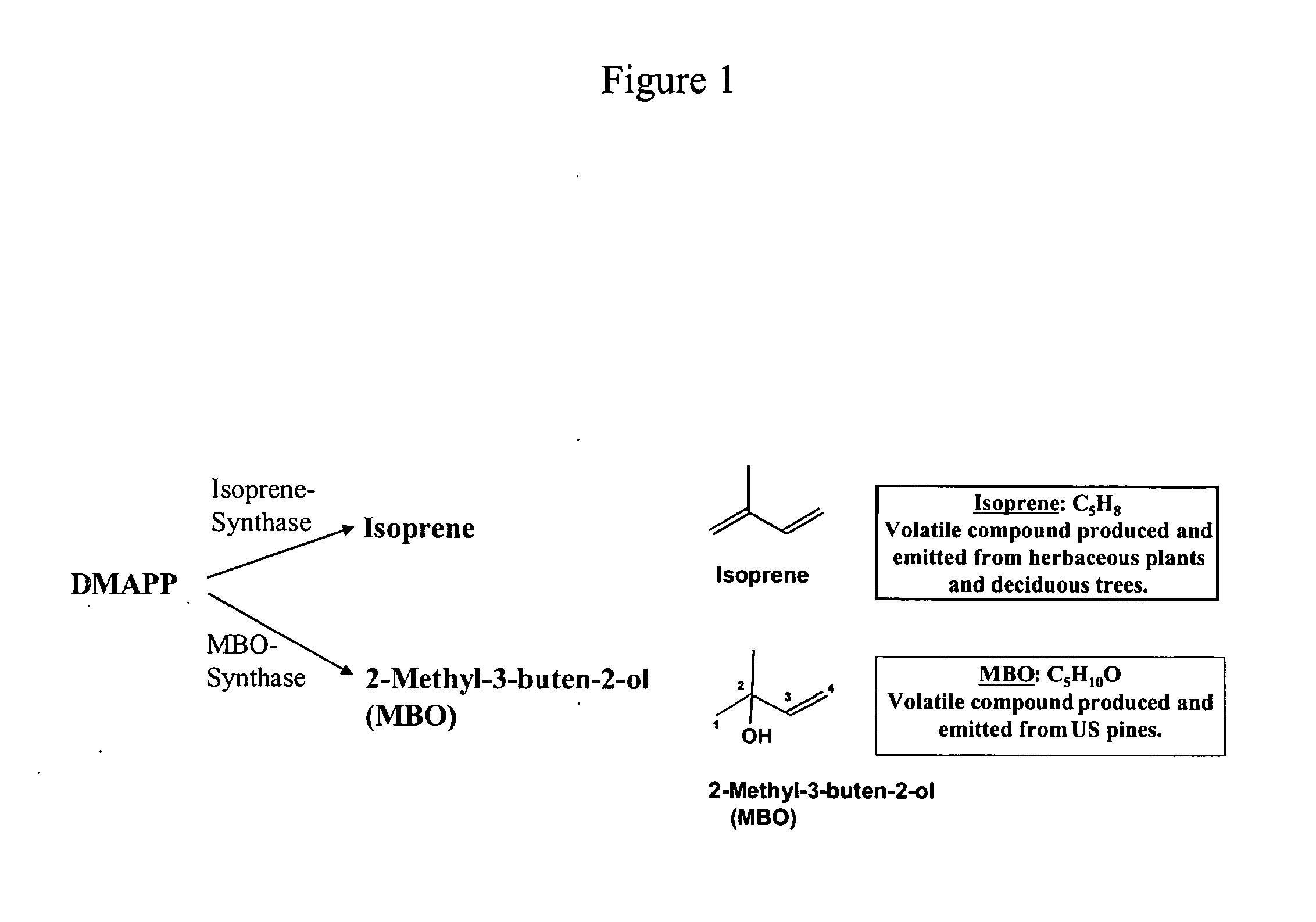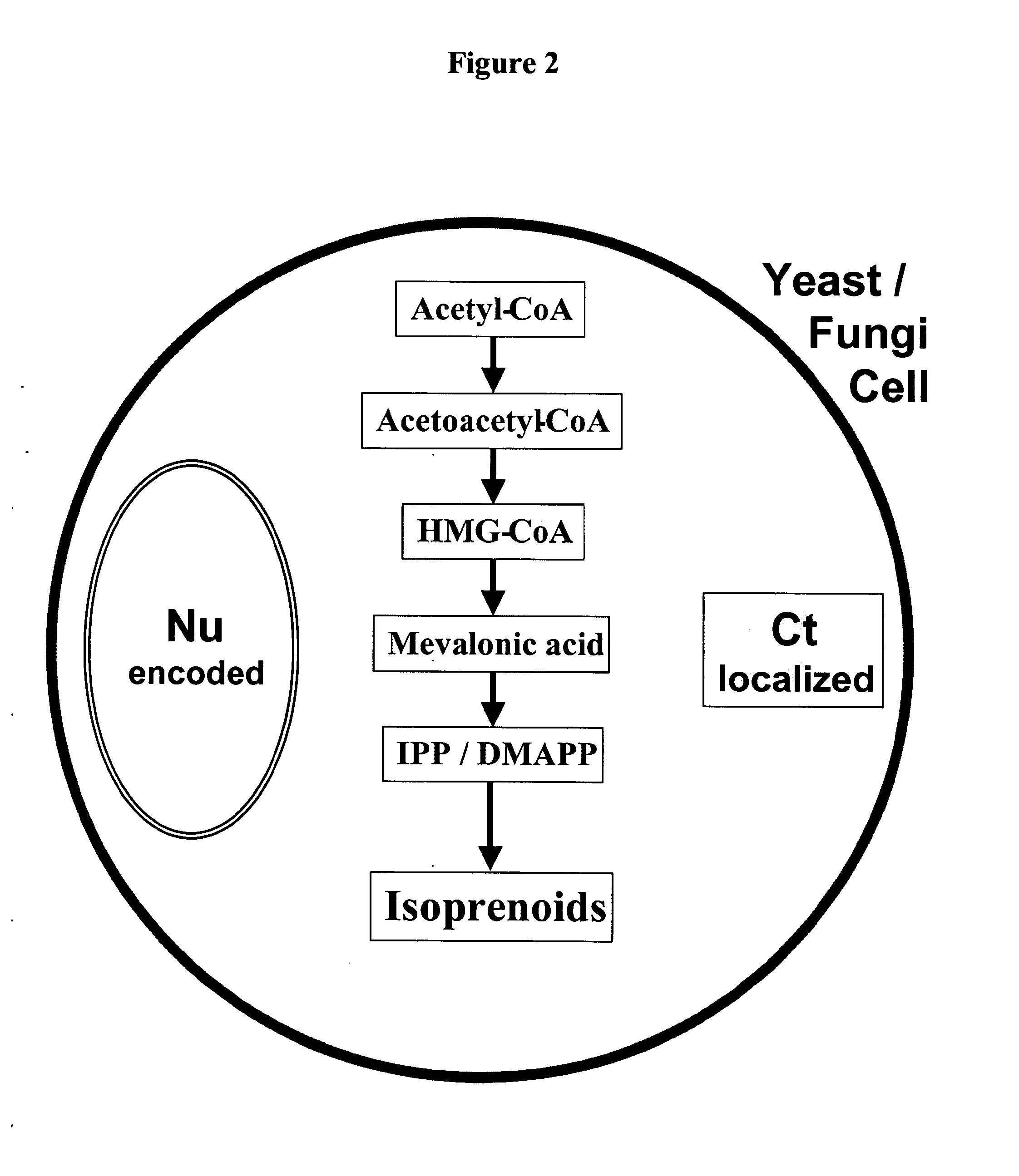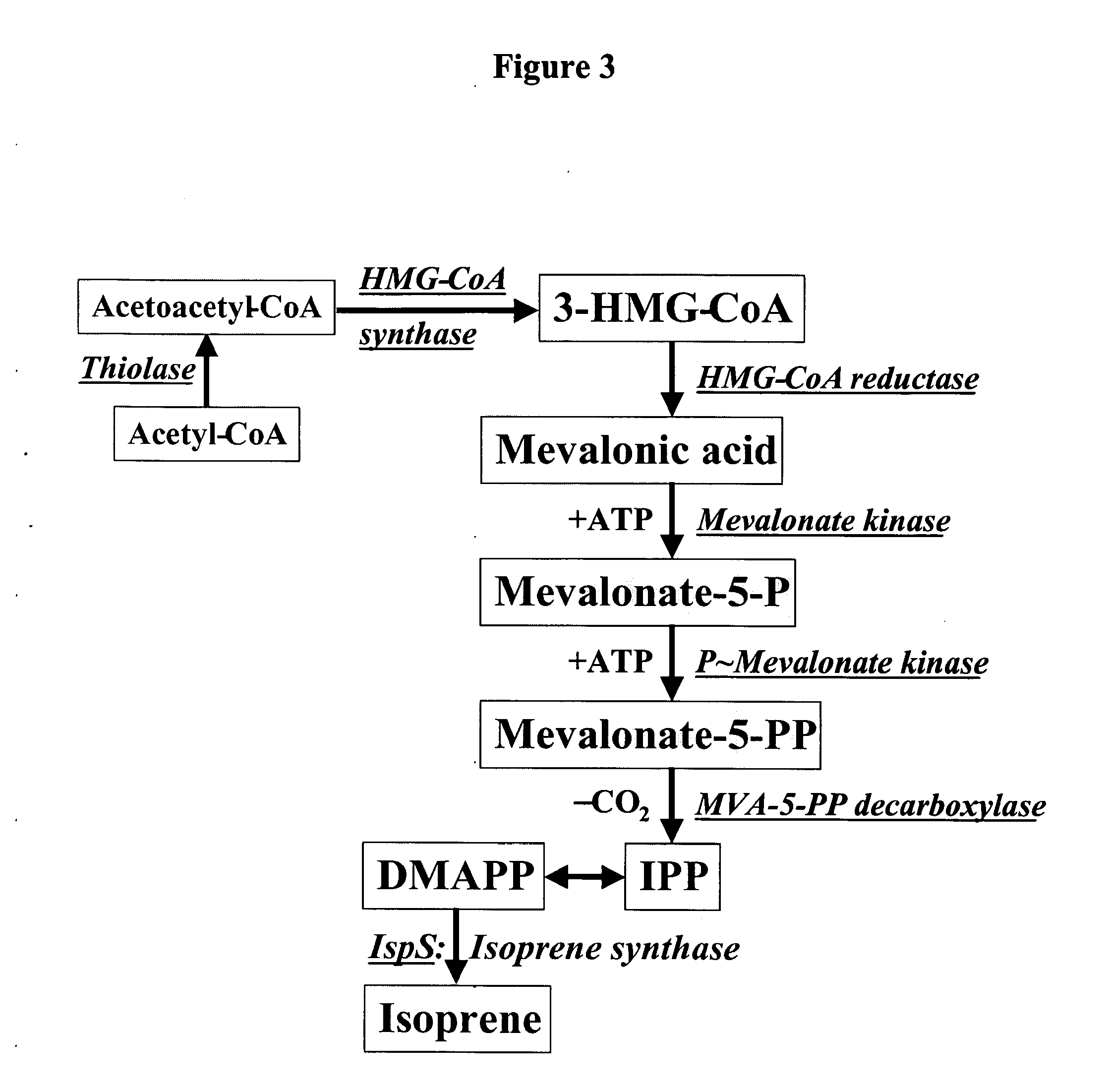Short chain volatile isoprene hydrocarbon production using the mevalonic acid pathway in genetically engineered yeast and fungi
- Summary
- Abstract
- Description
- Claims
- Application Information
AI Technical Summary
Benefits of technology
Problems solved by technology
Method used
Image
Examples
example 1
Design and Expression of Novel IspS Genes for Isoprene Hydrocarbon Production in Yeast and Fungi
[0105]In Fungi / Ascomycota (yeast / fungi) cells, the nuclear-encoded and cytosol-localized enzyme of the mevalonic acid pathway can be directed to produce isoprene following suitable genetic heterologous modification of the microorganism to express the isoprene synthase gene. Heterologous expression of the IspS gene in Fungi / Ascomycota cells confers the ability to produce volatile isoprene hydrocarbons.
[0106]A codon-adjusted synthetic DNA construct was generated based on the known nuclear-encoded “isoprene synthase” IspS protein sequence of Pueraria Montana (kudzu). This amino acid sequence (SEQ ID NO:2) was used as a template. Features of the yeast and fungi genes include: (1) Codon usage is different from that of the kudzu and specifically selected to fit the codon usage of yeast and fungi, and (2) the kudzu chloroplast-targeting sequence of the protein was omitted from the design of the ...
example 2
Growth of Saccharomyces cerevisiae Transformants and Isoprene Detection
[0116]For measurements of isoprene production, transformed yeast cells were first grown on agar plates. A small aliquot of the resultant colonies was inoculated in a starter liquid culture, followed by a small volume (1%) inoculation in an Erlenmeyer flask (50 ml capacity). Liquid cultures were grown in the presence of YPD media (tryptophan or leucine prototrophy) at 30° C. upon shaking in a rotary shaker to 150 rpm. Erlenmeyer flasks (50 ml capacity) were used for growth of the cells in a 20 ml volume, covered with Styrofoam stopper during cell growth, sealed by a silicon stopper for overnight incubation, prior to sampling of the gaseous headspace. Saccharomyces cerevisiae cultures in the early exponential growth phase were used for isoprene gas measurement experiments, as follows. One (1) ml of the headspace gas-phase was withdrawn by a gastight syringe and analyzed on a Shimadzu 8A GC equipped with a Porapak N...
PUM
 Login to View More
Login to View More Abstract
Description
Claims
Application Information
 Login to View More
Login to View More - R&D
- Intellectual Property
- Life Sciences
- Materials
- Tech Scout
- Unparalleled Data Quality
- Higher Quality Content
- 60% Fewer Hallucinations
Browse by: Latest US Patents, China's latest patents, Technical Efficacy Thesaurus, Application Domain, Technology Topic, Popular Technical Reports.
© 2025 PatSnap. All rights reserved.Legal|Privacy policy|Modern Slavery Act Transparency Statement|Sitemap|About US| Contact US: help@patsnap.com



